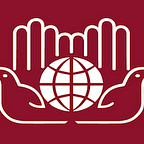Syria Initiative for Refugee Children
For the inaugural Design for Humanity Summit on June 22, 2018, Stephen Gray, Gretchen Schneider Rabinkin and Patricia Seitz, addressed the case study of the Syrian initiative.
Below is Stephen Gray, Gretchen Schneider Rabinkin and Patricia Seitz piece. More content from the summit can be found in the newly released Design for Humanity Summit Yearbook available for download here.
The Syria Initiative for Refugee Children was established in 2016 as a new model of transnational, cross-sectoral collaboration to address the needs of Syria’s most vulnerable refugees: children.
The diaspora caused by the Syrian Civil War has heightened an urgency to develop new tools, processes and methods to support positive interactions, social cohesion and healing at the nexus of humanitarian response and design. In response, an ad-hoc group of Boston designers set out to answer the following questions:
(1) Can US-based designers effectively contribute during international humanitarian crises?
(2) Would the design of public spaces in refugee settlements address a real need?
(3) What would a model for trans-national design/build collaboration look like?
The Syria Initiative is, on the surface, an initiative to build playgrounds. But in actuality, it is a first step to developing an adaptable process that introduces child-focused spaces into refugee contexts. With equal emphasis on social equity and design excellence, this initiative is a framework for local and international design and humanitarian networks to work together in impacted parts of the world. It provides an accessible and adaptable road map for designers who want to apply their skills to issues of global importance.
What began as a collaboration between members of the Boston Society of Architects and Boston Society of Landscape Architects, became a two-year process involving international NGOs, international architects and craftspeople, US-based design faculty and students, multiple institutes, firms, and companies, and over 75 members of the Boston design community. Since completing the first playground in summer 2018, the collaborative DNA has adapted to support a second projects in Lebanon as well as one in the United States.
The entire process included:
- PARTNERING with an international network of designers, builders, NGO’s, fiscal agents, funders, architects, academics.
- FUNDRAISING to support spaces for social interactions through play.
- FACILITATING a collaborative design process.
- IMPLEMENTING with local partners to support design, management, and construction capacities.
- DOCUMENTING interviews, site surveys, construction progress, and outcomes.
- REFLECTING on successes and failures, and apply those lessons to the next project.
Learn more about the Design for Humanity Summit II, taking place June 21, 2019 at Fordham University’s McNally Amphitheatre here.
About the IOM — UN Migration
Established in 1951, IOM is the leading inter-governmental organization in the fi eld of migration and works closely with governmental, intergovernmental and non-governmental partners. With 173 member states, a further 8 states holding observer status and offices in over 100 countries, IOM is dedicated to promoting humane and orderly migration for the benefit of all. It does so by providing services and advice to governments and migrants. IOM works to help ensure the orderly and humane management of migration, to promote international cooperation on migration issues, to assist in the search for practical solutions to migration problems and to provide humanitarian assistance to migrants in need, including refugees and internally displaced people
About the IIHA
The Institute of International Humanitarian Affairs (IIHA) prepares current and future aid workers with the knowledge and skills needed to respond effectively in times of humanitarian crisis and disaster. Our courses are borne of an interdisciplinary curriculum that combines academic theory with the practical experience of seasoned humanitarian professionals. The IIHA also publishes on a wide range of humanitarian topics and regularly hosts a number of events in the New York area, including the annual Humanitarian Blockchain Summit and Design for Humanity Summit.
For media inquiries please contact:
Camille Giacovas
Communications & Research Officer, IIHA
cgiacovas@fordham.edu
Angela Wells
Public Information Officer for the International Organization for Migration’s Department of Operations and Emergencies
awells@iom.int
